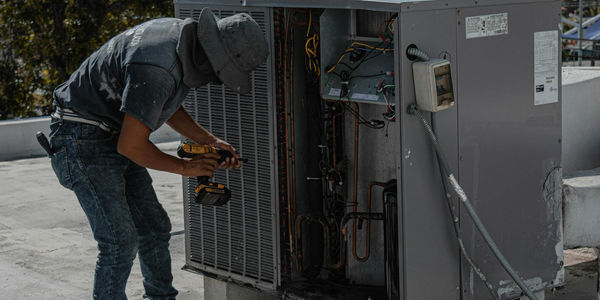OSHA 10 Training: Complete Guide, Requirements & Cost
- SkillCat Team

- Nov 3
- 8 min read
Updated: Nov 24

Getting started in a new trade or just trying to work safer? OSHA 10 training is one of the most common safety credentials you’ll see mentioned on job sites. But what exactly is it? The OSHA 10 training course is part of a voluntary program designed to teach workers basic safety and health information for recognizing, avoiding, and preventing common workplace hazards. This guide breaks down who needs it, what you actually learn, and everything else you need to know about the OSHA Outreach Training Program in simple terms.
What is the OSHA Outreach Training Program?
The main goal of the OSHA Outreach Training Program isn’t about memorizing complex regulations but about building a culture of safety. Since 1971, this program has trained millions of workers. After completing the training, you receive an official course completion card from the U.S. Department of Labor, which most people just call an OSHA card.
OSHA 10, OSHA 30, and Beyond: Understanding the Safety Training Hierarchy
You’ll hear about two main versions of the training: 10 hour and 30 hour. It’s important to understand where they fit in the larger picture of workplace safety.
OSHA 10 Hour Course: This is an entry level program. It’s designed for the general workforce to provide a basic awareness of common job related safety and health hazards.
OSHA 30 Hour Course: This is a more comprehensive program intended for supervisors, managers, and anyone with safety responsibilities. It covers a wider range of topics in much greater detail.
The core subjects are similar, but the 30 hour course dives deeper into managing safety programs and controlling hazards. Because of OSHA rules that limit training to 7.5 hours per day, the 10 hour course must take at least two days to complete, while the 30 hour course requires a minimum of four days.
These courses represent awareness level training, not a certification to perform specific tasks. The top of the training hierarchy is the authorized trainer card. Safety professionals with years of experience can take advanced courses, like the OSHA 500 or OSHA 501, which allow them to become authorized trainers who can teach the 10 and 30 hour courses.
The Core of Training: Hazard Recognition and Prevention
The main goal of any OSHA 10 training is to sharpen your ability to spot and handle dangers before they cause an injury. The program emphasizes hazard identification, avoidance, and control rather than just reciting rules.
This focus is critical. In construction, for example, a group of hazards known as the “Fatal Four” (falls, electrocutions, struck by object accidents, and caught in or between accidents) consistently cause over half of all construction worker deaths each year. By learning to recognize the warning signs, like an unguarded edge or an unstable trench, workers can take steps to protect themselves and others.
Is OSHA 10 Training Mandatory? State Requirements
At the federal level, this training is voluntary. OSHA does not have a rule requiring every worker to have an OSHA 10 card. However, some states, cities, and many private employers do require it as a condition of employment, especially in construction.
Several states have enacted laws that mandate OSHA 10 training for workers on certain projects, typically public works. These states include:
Connecticut: Required for all workers on public projects over $100,000. Training must be renewed every five years.
Massachusetts: Required for all workers on public sector projects.
Missouri: Required for construction workers on public projects.
Nevada: All construction workers must get OSHA 10 training within 15 days of being hired. Supervisors need OSHA 30.
New Hampshire: Required for all workers on public projects over $100,000.
New York: Required for all workers on public projects over $250,000. New York City has additional, more stringent requirements, often mandating an SST card which involves more training hours.
Rhode Island: Required for workers on state or municipal projects over $100,000.
Pennsylvania: Required for construction and demolition workers in Philadelphia.
West Virginia: Required for workers on public improvement projects over $500,000.
Always check local regulations, as requirements can change and may have specific details regarding project types and renewal periods.
Types of OSHA 10 Training Courses
The training is tailored to different industries to ensure the content is relevant. There are three main types of 10 hour courses.
OSHA 10 Hour Construction
This is the most popular OSHA 10 training course by far. It’s designed specifically for the construction industry and focuses heavily on the “Fatal Four” hazards. Topics often include fall protection, electrical safety, scaffolding, and trenching safety. Many states and private contractors require this card for anyone working on a construction site.
OSHA 10 Hour General Industry
This course is for everyone outside of construction and maritime work. It applies to industries like manufacturing, warehousing, healthcare, and retail. Topics typically cover things like electrical safety, hazard communication for chemicals, machine guarding, and fire prevention.
OSHA 10 Hour Maritime
This is a more specialized course for workers in shipyards, marine terminals, and longshoring operations. The training covers the unique hazards found in these environments, such as crane safety, confined space entry on vessels, and personal flotation devices.
Finding and Verifying a Legitimate OSHA 10 Training Course
It’s crucial that you get your training from a legitimate source. OSHA Outreach courses must be taught by an OSHA authorized trainer.
To find an in person class, you can use the official database of authorized trainers on OSHA’s website. If you prefer learning online, OSHA also maintains a list of accepted online training providers. Taking a course from an unapproved website means you will not receive a valid Department of Labor card.
For an affordable and convenient option, you can get your official card through a trusted platform. For example, you can start your OSHA 10 training with SkillCat for a low cost and complete it on your own schedule.
How to Spot and Avoid Fake OSHA Cards
Unfortunately, fraudulent training cards are a real problem. Using or creating a fake OSHA card can lead to serious consequences, including fines and even prison time. Here’s how to protect yourself:
Verify Your Trainer: Only take courses from OSHA authorized trainers. You can find lists of them on OSHA’s official website.
Inspect the Card: Legitimate cards are durable, plastic, and high quality. Look for blurry printing, spelling errors, or incorrect logos, which are all red flags.
Check for a QR Code: Newer cards issued after March 2016 include a QR code on the back that you can scan to verify the training details.
Be Wary of Guarantees: Be suspicious of providers that guarantee a card in a few hours or promise a job upon completion. Legitimate training takes a minimum of two days.
Your OSHA 10 Card: What You Need to Know
Once you complete the course, you’ll receive your wallet card. Here are a few important things to know about it.
Replacing a Lost Card
If you lose your card, you must contact the original trainer or online provider who issued it. OSHA itself does not keep records and cannot issue replacements. A replacement can only be issued if you completed the training within the last five years, and you are only allowed one replacement.
Is It a Certification?
No, the OSHA 10 training course is not a certification or a license. It is a training completion card. It proves you have attended a safety awareness course. It does not certify you to perform specific tasks.
Introduction to OSHA Requirement
Every OSHA Outreach course begins with a mandatory two hour “Introduction to OSHA” module. During this segment, trainers are required to provide students with handouts, such as the OSHA “Worker Rights” publication, so you leave with physical resources you can reference later.
Know Your Protections: Worker Rights Under OSHA
A key part of your training involves understanding your rights. The Occupational Safety and Health Act (OSH Act) gives you a powerful voice in your own safety. Your fundamental rights include:
The right to a safe workplace free from serious recognized hazards.
The right to speak up about safety concerns without fear of retaliation. It is illegal for an employer to punish you for reporting a hazard.
The right to receive safety training in a language and vocabulary you can understand.
The right to request a confidential OSHA inspection of your workplace.
The right to review records of work related injuries and see the results of any hazard testing.
If an employer retaliates against you for using your rights, you can file a whistleblower complaint with OSHA within 30 days.
Employer Responsibilities Under OSHA
Safety is a two way street. Employers have legal obligations to protect their workers. Some of their key responsibilities include:
Providing a workplace free from serious recognized hazards.
Ensuring tools and equipment are safe and properly maintained.
Using signs, labels, or color codes to warn workers of potential dangers.
Providing all required safety training to employees in a language they understand.
Displaying the official OSHA “It’s the Law” poster in a prominent location.
Reporting any work related fatality to OSHA within 8 hours and any hospitalization, amputation, or loss of an eye within 24 hours.
Keeping accurate records of work related injuries and illnesses.
How to Report Unsafe Conditions
If you believe your workplace has serious hazards or is not following OSHA standards, you can file a complaint. You have a few options:
Online: Use the complaint form on OSHA’s official website.
Phone: Call OSHA’s toll free number at 1 800 321 OSHA.
Mail or Fax: Download a form and send it to your local OSHA office.
When you file, you can request that OSHA keep your identity confidential from your employer. Be as specific as possible about the hazards you’ve observed.
Frequently Asked Questions about OSHA 10 Training
What does OSHA 10 training cover?
It covers a broad range of introductory safety topics relevant to your industry. For construction, this includes a heavy focus on falls, electrocution, struck by, and caught in hazards. For general industry, it includes topics like machine guarding, hazard communication, and electrical safety. All courses start with a module on worker rights and employer responsibilities.
How long does it take to get my OSHA 10 card?
After you finish the course, your trainer processes the request. It typically takes a few weeks for the official Department of Labor card to be printed and mailed to you. Most trainers provide a temporary certificate of completion immediately.
Does my OSHA 10 card expire?
Federally, OSHA 10 cards do not have an expiration date. However, some employers or local regulations may require you to take a refresher course every three to five years. For example, states like Connecticut and Nevada require retraining every five years for certain workers.
How much does OSHA 10 training cost?
Prices vary by provider. In person classes can range from $60 to $150 or more. Online courses are often more affordable. For instance, you can get your official OSHA 10 card through SkillCat’s program for just $50.
Can I get OSHA 10 training in Spanish?
Absolutely. OSHA is committed to making training accessible to everyone. You can find authorized trainers who conduct classes entirely in Spanish. Additionally, all authorized online providers offer a Spanish language version of the OSHA 10 training course.
Can I take the entire OSHA 10 training online?
Yes, you can. Just be sure to choose a provider from OSHA’s list of authorized online training companies to ensure you receive a legitimate DOL card.
Is an online OSHA 10 card the same as an in person one?
Yes. As long as you complete the course through an OSHA authorized online provider, you will receive the exact same official Department of Labor card as someone who took the class in person.


